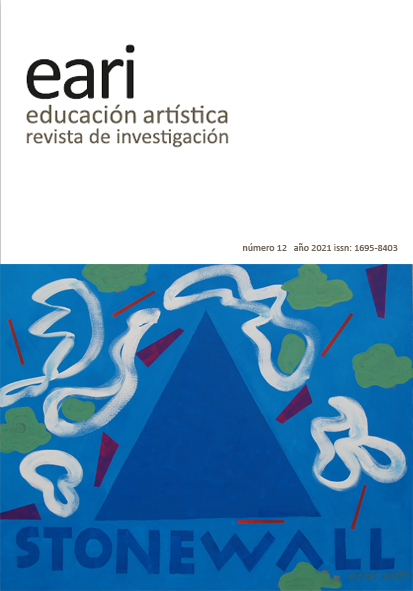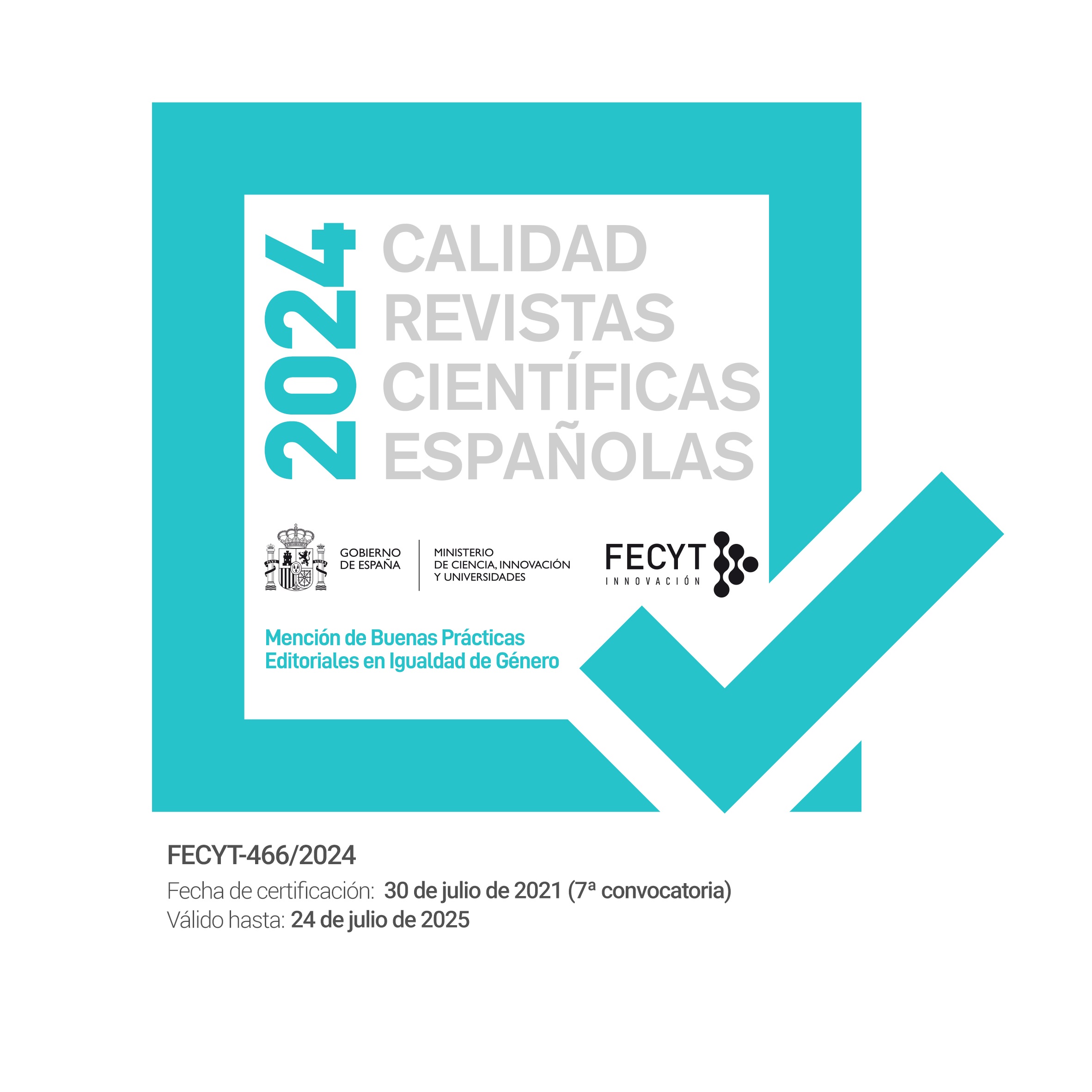The Theater and its pedagogical approach as a compulsory subject in the Argentine school curriculum: Federal Law of Education of 1993
DOI:
https://doi.org/10.7203/eari.12.20612Keywords:
theater, educational reforms, artistic education, pedagogical approaches Abstract
Abstract
In Argentina, the Theater was incorporated as a compulsory subject in a provincial reform in 1988 with the Resolution of the School Government No. 386/88. Subsequently, the Federal Law of Education sanctioned in 1993, extended the presence of the Artistic Area (and within it the Theater) nationwide throughout the educational system (EGB and Polimodal). Finally, the National Law of Education of 2006, consolidated the presence of Artistic Education giving it epistemological importance and guaranteeing it as a modality of termination of secondary studies. If we take into account that educational reforms, such as public policies, produce substantial variations in the didactic model of the subjects, it is to be expected that each reform has had an impact on the pedagogical approach and the didactic model of Theater as a subject. This article focuses on the educational reform of 1993, (Federal Law of Education No. 24,195) to describe the socio-political context and identify what is the epistemological paradigm that prescribes Art Education and what is the didactic model of Theater as a subject that is it emerges from him.
 Downloads
Downloads
 References
References
Akoschky, J., Brandt, E., Calvo, M., Chapato, M., Terigi, F., Kalmar , D., . . . Wiskitki., J. (1998). Artes y escuela. Aspectos curriculares y didácticos de la educaciion artística. Buenos Aires : Paidós.
Arnheim, R. (2006). Arte y percepcion visual. . Madrid, España: Alianza.
Bamford, A. (2009). El factor ¡Wuau! El papel de las artes en la educación. Barcelona, España: Octaedro.
Chapato, Maria Elsa; Dimatteo, María Cristina;. (2014 ). Educación Artística, Horizontes, escenarios y prácticas emergentes. Buenos Aires: Biblos.
Coll, C. (1994). Fundamentos del currículum. En C. Coll, Psicología y Currículum. Una aproximación psicopedagógica a la elaboración del currículum escolar. Barcelona: Paidós.
De Marinis, M. (1997). Comprender el Teatro. Lineamientos de una nueva teatrología. Buenos Aires, Argentina: Galerna.
Denzin, N., & Lincoln, Y. (2012). Introducción general. La investigación cualitativa como disciplina y como práctica. Madrid: Gedisa.
Dewey, J. (2008). El Arte como Experiencia. Barcelona, España: Paidós.
Dirección General de Escuelas. Gobierno de Mendoza (1997). Renovación Curricular en la Provincia de MENDOZA. Educación Artística. Mendoza, Argentina.
Dussel, I. (1997). Currículum, humanismo y democracia en la enseñanza media. Buenos Aires: Oficina de Publicciones de la Univesiad de Buenos Aires.
Dussel, I. (2006). Estudio sobre gestión y desarrollo curricular en países de América Latina. Segunda Reunión del Comité Intergubernamental del Proyecto Regional de Educación para América Latina y el Caribe (PRELAC). Santiago de Chile
Efland, A. (1990). Una historia de la educación del arte. Barcelona España: Paidós.
Eisner, E. (1991). Reflexiones acerca de la alfabetización. Arte, Individuo y Sociedad, 4, 9-22.
Eisner, E. (1993). Formas de comprensión y el futuro de la investigación educativa. 22(7), 5-11. doi: 10.2307 / 1176749
Ferrer, G. (2004). Las reformas curriculares de Perú, Colombia, Chile y Argentina: ¿quién responde por los resultados? (Vol. 45). Lima: GRADE. Obtenido de http://bibliotecavirtual.clacso.org.ar/Peru/grade/20100511014531/ddt45.pdf
Fischer-Lichte, E. (2011) Estética de lo performativo. Abada.
Filmus, D. (1996). Estado, sociedad y educación en Argentina de fin de siglo procesos y desafíos. Buenos Aires: Ministerio de Cultura y Educación.
Flick, U. (2004). Introducción ala investigación cualitativa. Madrid: Morata.
Gadamer, H.-G. (1991). La Actualidad de lo Bello . Barcelona, España: Paidos.
Gardner, H. (1994). Educación artística y desarrollo humano, . Barcelona: Paidós.
Giráldez, A. (2009). Aproximaciones o enfoques de la educación artística. En L. Jiménez, I. Aguirre , & L. Pimentel, Educación artística y Cultura Ciudadana. Madrid, España:OEI, Santillana.
Hernández, A., García, E., Rodríguez, J. A., Dabdoub, L., Roldán, M. E. O, Quiroz, M. Y., Castillo, O., Torres, R. M. y Morales, S. (2011). Las Artes y su enseñanza en la educación básica. Mexico: Secretaría de Educación Pública.
Holovatuck, J., & Astrosky, D. (2014). Manual de juegos y ejercicios teatrales. Argentina: Atuel.
Jiménez, L., Aguirre , I., & Pimentel, L. (2009). (coords) Educación artística, cultura y ciudadanía. . Madrid: Santillana.
Kowzan, T. (1997). Teoría del teatro. Madrid, España: Arco.
Lehmann, H. (2016) Teatro posdramático. CENDEAC.
Ley Federal Educación Nº 24.195, Boletín Oficial del Gobierno Nacional, Buenos Aires, Argentina,14 de abril de 1993.
Lotman, Y. (1970). Estructura del texto artístico. Madrid, España: Istmo.
Lowenfeld, V., & Brittain, W. (1980). Desarrollo de la capacidad creadora. . Buenos Aires, Argentina: Kapelusz.
Motos, T. (2009). El teatro en la educación secundaria: fundamentos y retos . Creatividad y Sociedad (14).
Ministerio Nacional de Educación, Consejo Federal de Cultura y Educación (1993). Anexo de la Resolución Nº 26/93 al Documento "Educación Artística (Régimen Especial) Borrador para la Elaboración de los Contenidos Básicos Comunes de las Especialidades de Educación Artística. Buenos Aires, Argentina.
Ministerio Nacional de Educación, Consejo Federal de Cultura y Educación (1993). Contenidos Básicos Comunes para la Educación General Básica Artística. Buenos Aires, Argentina
Read, H. (1982). Educación por el Arte. Madrid: Paidós Ibérica.
Serrano, R. (1996). Tesis sobre Stanislavski . México: Colección Escenología.
Serrano, R. (2004). Nuevas tesis sobre Stanislavsky: fundamentos para una teoría pedagógica. Buenos Aires, Argentina: Atuel.
Stanislavsky, K. (2009). El trabajo del actor sobre sí mismo en el proceso creador de la encarnación. Barcelona, España: Alba.
Strauss, A. y Corbin, J. (1998). Basics of qualitative research: Techniques and procedures for developing grounded theory. Thousand Oaks, CA: Sage
Tedesco, J. C. y Tenti Fanfani, E. (2001). La reforma educativa en Argentina. Semejanzas y particularidades. . Buenos Aires: Grupo Asesor de la Universidad de Stanford/BID.. Ministerios de Educación de Argentina, Chile y Uruguay,
Torres, S. (2020). Los enfoques pedagógicos presentes en la Educación Artística. Trayectoria. Práctica Docente en Educación Artística, 7, 66-87.
Ubersfeld, A. (1997). La escuela del espectador. Madrid, España: Asociación De Directores de España.
Vieites, M. (2015). De la naturaleza educativa de la educación teatral y de sus rasgos pertinentes. REIPE. Revista de Estudios e Investigación en Psicología y Educación, 4, 21-25.
Vygotsky, L. (1982). Obras escogidas II . Moscú: Editorial pedagógica.
Wimmer, M. (2002). La mediación artística en lso procesos educativos.En: Perspectivas. Revista trimestral de educación comparada, 32(4), 55-70.
Downloads
Published
How to Cite
-
Abstract1040
-
PDF (Español)1202
Issue
Section
License
![]()
Educación artística: revista de investigación (EARI) retains the proprietary rights (copyright) of published works, and favors and allows the reuse of the same under the license Creative Commons Attribution-Noncommercial Use 4.0 International License (CC-BY-NC 4.0), which allows third parties to use the published material whenever the authorship of the work and the source of publication is mentioned (journal, publisher and URL of the work), and it is used for non-commercial purposes.
Authors are encouraged to disseminate their work after it has been published, through the internet (for example, in institutional archives online or on its website) which can generate interesting exchanges and increase work appointments.








